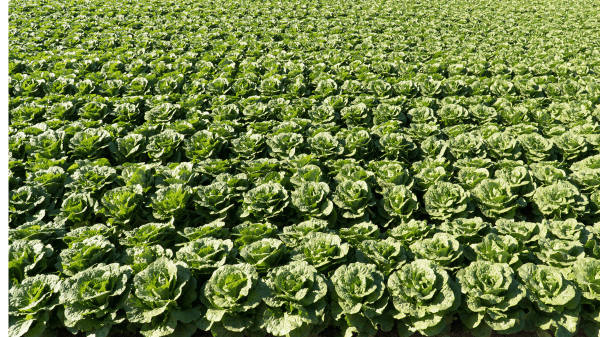I enjoy Sylvain Charlebois’ blog on Canadian Grocer. He is a professor in food distribution policy and senior director/AGRI-Food Analytics Lab at Dalhousie University in Nova Scotia.
This one is from that previous age back in November 2022.
It’s out of date. Sort of. He says Canada’s lettuce shortage is due to “a drought and a nasty virus.” That was true at the time, but not now.


Nevertheless, the rest of his column is still timely. Although Charlebois’ choice of words is ironic in current circumstances, he says that in regard to lettuce, “California is drying up, which is a problem for Canada–and it will likely get worse.”
Charlebois continues, “Short-term shortages, recalls and disruptions coming from California have been numerous. Perhaps not noticeable for most, but certainly numerous. This current lettuce shortage is much more visible and has been amplified by extensive media coverage. This is a clear case of how climate change is impacting our dinner plates. And we are slowly coming to the realization that our current approach to getting leafy greens over the winter months is no longer sustainable.
“In California, farmers have had to get water from farther away to irrigate fields,” he continues, “and distances have only grown year after year. As those distances increase, so do risks. Putting more pressure on irrigation systems will lead to supply failures and, of course, food contamination. Poor farmland planning and biosecurity practices led to more recalls, since the water was at times situated next to livestock. The great 2019 romaine lettuce recall during the holiday season a few months before the pandemic when thousands of kilos of product went to waste is a good example.”
Charlebois points back to a time between the 1940s and 1980s, when Canada produced lettuce at competitive prices. The trade climate changed with the North Atlantic Free Trade Agreement (NAFTA) in 1994, after which it became more economical to import the crop from the United States.
“One path,” continues Charlebois, “would be to grow more domestically, all year round. But growing lettuce in a controlled environment is capital-intensive and would require optimal plant science and genetics. California’s Driscoll’s recently licensed Canadian farmers to grow their berries in Canada, since the company can’t get water. This could happen to other commodities like lettuce–why not?”
Such solutions may or may not be feasible on any grand scale. But these comments suggest that the biggest problem for the California leafy greens industry is to continue to be perceived as a reliable supplier, both in Canada and other markets. And there is only one way to do that: actually be a reliable supplier.
The California leafy greens industry could certainly cite force majeure as a cause of its long-term supply problems. But buyers—and consumers—don’t care about excuses. If scarcity and high prices make the state’s lettuce no longer a sure bet for them, they are likely to turn elsewhere.
Erratic supplies probably won’t make lettuce disappear from the dinner plates of homes and restaurants. But they could well make it much scarcer.



